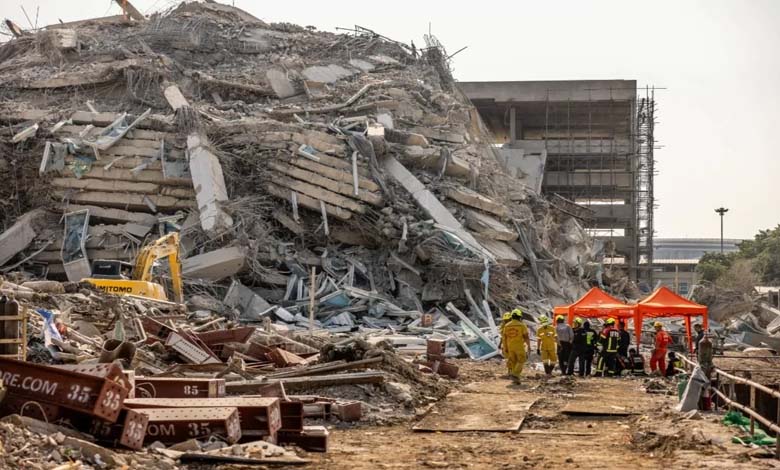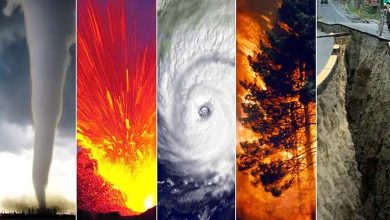Myanmar: Around 20 Dead and Widespread Destruction after Earthquake

A catastrophic earthquake of significant magnitude recently struck Myanmar, leading to extensive destruction and loss of life. Approximately 20 individuals tragically lost their lives after being transported to a central hospital in the capital, Naypyidaw, where they succumbed to their injuries. The earthquake, which caused widespread devastation across the country, left behind a trail of destruction that has had a profound impact on both the affected communities and the nation’s infrastructure. As rescue operations continue, the full extent of the disaster remains unclear, with officials warning that the death toll may rise as more casualties are reported in the coming days. The destruction of critical infrastructure, including hospitals, has made it difficult for emergency responders to reach remote areas, further complicating the recovery efforts.
-
Two Earthquakes Strike Ethiopia within 10 Minutes
-
Earthquake of Magnitude 5.5 Strikes China’s Qinghai Province
According to Agence France-Presse, a doctor at Naypyidaw General Hospital stated, “Twenty people have died after arriving at our hospital so far. There were many injured.”
A doctor from Naypyidaw General Hospital confirmed the heartbreaking toll of the earthquake. According to the doctor, 20 people have died so far after being brought in for treatment following the earthquake, and many others have been left severely injured. The hospital, which is one of the primary medical centers in the region, has been overwhelmed by the large number of casualties and the severity of their injuries. While the hospital staff is working tirelessly to treat the wounded, the influx of patients has strained resources, with limited medical supplies and equipment available to address the growing needs. The injuries sustained by the victims range from broken bones and lacerations to more severe trauma, as many buildings in the area collapsed during the tremors. The full extent of the injuries is yet to be fully assessed, but it is clear that the earthquake’s impact on public health has been devastating.
-
Violent Earthquake Strikes Vanuatu, Damaging U.S. and French Embassies
-
4.9-Magnitude Earthquake Strikes Southern Philippine Province
The International Committee of the Red Cross had earlier reported the destruction of buildings and infrastructure, including roads, bridges, and public facilities.
In the aftermath of the earthquake, the International Committee of the Red Cross (ICRC) reported significant damage to the country’s infrastructure. Buildings, including homes, hospitals, and government facilities, have been destroyed or severely damaged, leaving many people without shelter or basic services. Roads and bridges, vital for transportation and the movement of aid, have been rendered impassable in many regions, making it difficult for emergency responders to reach those in need. The damage to public facilities, such as schools and water treatment plants, has further exacerbated the crisis, creating additional challenges for relief efforts. With many areas cut off from the rest of the country, local authorities are struggling to assess the full scope of the damage and coordinate effective disaster response measures. The destruction of vital infrastructure has disrupted daily life for millions of people and will likely have long-term consequences for the country’s recovery and rebuilding efforts.
-
After a 5.9-magnitude earthquake, Japan warns of tsunami risk on its remote islands
-
Magnitude 5 earthquake hits southern Turkey
Mary Manrique, program coordinator for the International Federation of the Red Cross, told journalists in Geneva: “There are concerns about large dams, and their condition is currently being monitored.”
Mary Manrique, a key figure with the International Federation of the Red Cross, expressed serious concerns regarding the condition of large dams in the affected region. The dams, which are crucial for water supply and flood control, may have suffered structural damage as a result of the earthquake’s powerful tremors. Manrique explained that there is an ongoing effort to closely monitor the situation, as the integrity of these dams is critical to preventing potential flooding or other catastrophic consequences. If the dams were to fail, it could result in widespread flooding, displacing even more people and further complicating the already dire situation. The International Federation of the Red Cross, in collaboration with local authorities, is actively tracking the condition of these dams and is prepared to take immediate action if the situation worsens. Given the seismic activity and the potential risks involved, experts are taking every precaution to assess the dams’ safety and protect the affected populations.
-
6.9-Magnitude Earthquake Hits “Tonga” as Guterres Attends Regional Summit
-
Earthquake of 5.9 Magnitude Strikes Ishikawa, Japan
She added, “We expect the impact to be extremely significant.”
Mary Manrique further emphasized the severity of the situation, noting that the full impact of the earthquake and its aftermath is expected to be significant. The damage caused by the quake, coupled with the potential risks posed by weakened infrastructure, particularly the dams, is likely to create widespread and long-lasting challenges for the country. While the immediate focus remains on providing emergency aid and assistance to those in need, the long-term recovery process will be difficult and costly. The International Federation of the Red Cross is working with various partners to coordinate relief efforts, but the scale of the disaster means that the road to recovery will be long. Many communities, especially those in rural and remote areas, face a prolonged period of hardship as they struggle to rebuild their homes, their lives, and their futures. The international community has been urged to continue providing support as Myanmar faces one of its most challenging crises in recent history.
-
5.0 Magnitude Earthquake Strikes Sichuan Province in China
-
3.2 Magnitude Earthquake Strikes the City of Chlef, Algeria
-
Two earthquakes hit Iran in less than 24 hours
-
4.8-Magnitude Earthquake Strikes New York and New Jersey












